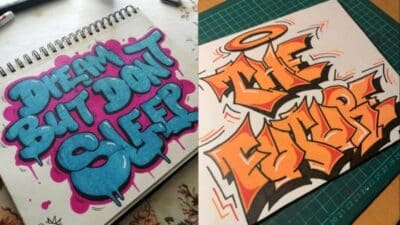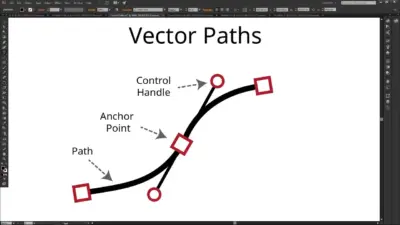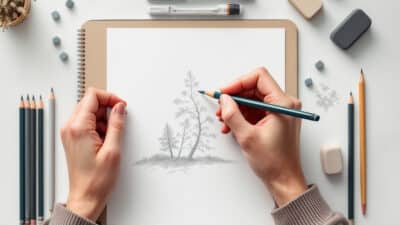Drawing is a skill that is both rewarding and challenging. Whether it’s for personal enjoyment or professional work, drawing can be a great way to express oneself. However, many people struggle with getting started or improving their techniques. In this article, we will provide some useful tips to help anyone looking to improve their drawing skills.

One of the most important things to keep in mind when drawing is to start with a good foundation. This means understanding the basic principles of drawing such as proportion, perspective, and shading. By mastering these fundamentals, artists can create more realistic and compelling drawings. Additionally, it’s important to practice regularly in order to develop muscle memory and improve hand-eye coordination.
Another key tip for successful drawing is to pay attention to details. Whether it’s the texture of a surface or the subtle nuances of a facial expression, adding small details can make a big difference in the overall quality of a drawing. However, it’s important to strike a balance between too much detail and not enough. Too much detail can make a drawing appear cluttered, while not enough can make it look unfinished. By finding the right balance, artists can create drawings that are both accurate and aesthetically pleasing.
Understanding the Basics

Drawing is a skill that requires practice and patience. However, before diving into the more advanced techniques, it’s important to understand the basics. Here are some essential tips to get started:
Choosing the Right Tools
The first step to creating great art is selecting the right tools. When it comes to drawing, there are a few essential items every artist should have. These include:
- Pencils: A set of graphite pencils ranging from hard (H) to soft (B) will allow for a range of shading and line thicknesses.
- Erasers: A kneaded eraser can be shaped to erase small areas, while a white vinyl eraser is great for larger mistakes.
- Paper: A high-quality paper with a smooth surface will prevent smudging and allow for more precise lines.
Understanding Shapes and Forms
Before drawing anything, it’s important to understand the basic shapes and forms. Everything can be broken down into simple shapes, such as circles, squares, and triangles. By understanding these shapes, artists can create more accurate and realistic drawings. It’s also important to understand how light interacts with these shapes, which brings us to our next point.
Mastering Light and Shadow
Light and shadow are essential components of any drawing. Understanding how light interacts with objects can help create a sense of depth and realism. Artists should pay attention to where the light source is coming from and how it affects the shapes and forms in their drawing. By adding shading and highlights, artists can create a three-dimensional effect that brings their drawings to life.


By mastering these basic concepts, artists can build a strong foundation for their drawing skills. With practice and patience, anyone can improve their art and create stunning works of art.
Developing Drawing Techniques

Sketching
Sketching is an essential skill for any artist. It is the foundation for all other drawing techniques. Here are a few tips to help improve your sketching:
- Start with light, loose lines to establish the basic shapes and proportions.
- Use reference images to help you accurately capture the details of your subject.
- Practice drawing from life to improve your observation skills.
- Experiment with different pencils to find the one that feels most comfortable in your hand.
Shading
Shading is the art of creating the illusion of depth and texture in a drawing. Here are a few tips to help improve your shading:
- Use a light source to determine where the shadows and highlights fall on your subject.
- Start with light shading and gradually build up to darker tones.
- Experiment with different shading techniques, such as hatching and cross-hatching, to create different effects.
- Use a blending tool, such as a blending stump or your finger, to smooth out your shading and create a more realistic look.
Blending
Blending is the process of smoothing out the lines and shading in a drawing to create a more cohesive look. Here are a few tips to help improve your blending:
- Use a blending tool, such as a blending stump or your finger, to blend your shading together.
- Experiment with different blending techniques, such as circular motions or back-and-forth strokes, to create different effects.
- Be careful not to over-blend, as this can result in a loss of detail and texture.
- Use a kneaded eraser to lift out highlights and create texture in your drawing.
Cross-Hatching
Cross-hatching is a shading technique that involves drawing a series of parallel lines in one direction and then crossing them with a series of parallel lines in another direction to create a mesh-like pattern. Here are a few tips to help improve your cross-hatching:
- Start with light lines and gradually build up to darker tones.
- Experiment with different line weights and spacing to create different effects.
- Use cross-hatching to create texture and depth in your drawing.
- Be careful not to overdo it, as too much cross-hatching can make your drawing look cluttered and confusing.
Exploring Styles and Mediums

Pencil Drawing
Pencil drawing is a popular medium for artists of all levels. It is versatile and easy to use, making it a great choice for beginners. Pencils come in different grades, from hard to soft, which affect the darkness and texture of the lines. Artists can use pencils to create a range of effects, from light and delicate lines to bold and heavy strokes.


When drawing with pencils, it’s important to choose the right paper. Smooth paper is good for fine details, while rough paper can add texture to the drawing. Artists can also experiment with different techniques, such as cross-hatching and blending, to create different effects.
Charcoal Drawing
Charcoal is a popular medium for creating dramatic and expressive drawings. It is a messy medium, but the results can be stunning. Charcoal comes in different forms, from sticks to pencils, and can be used to create a range of effects, from light and delicate lines to bold and heavy strokes.
When drawing with charcoal, it’s important to choose the right paper. Rough paper is good for creating texture, while smooth paper can be used for fine details. Artists can also experiment with different techniques, such as smudging and erasing, to create different effects.
Digital Drawing
Digital drawing is a modern medium that allows artists to create drawings using a computer or tablet. It offers a range of tools and effects that are not possible with traditional mediums. Digital drawing can be a great choice for artists who want to create detailed and precise drawings.


When drawing digitally, it’s important to choose the right software and hardware. There are many options available, from free software to professional-grade programs. Artists can also use a variety of tools, such as brushes and layers, to create different effects. The flexibility of digital drawing allows artists to experiment with different styles and mediums, without the mess and limitations of traditional mediums.
Improving Your Skills

Practicing Regularly
One of the most important things an artist can do to improve their skills is to practice regularly. Consistent practice helps to build muscle memory, develop technique, and cultivate a unique style. It’s recommended that artists set aside time each day to draw, even if it’s just for a few minutes. This can help to establish a routine and make drawing a habit.
Taking Art Classes
Taking art classes can be a great way to improve drawing skills. Instructors can provide valuable feedback, offer new techniques, and expose students to different styles of art. There are many different types of art classes available, from traditional in-person classes to online courses. It’s important to research different options and find a class that fits the artist’s skill level and interests.
Studying from Real Life
Studying real life is an essential part of improving drawing skills. Observing and drawing from real-life objects and scenes can help artists develop their observation skills and improve their understanding of form, perspective, and composition. It’s recommended that artists spend time drawing from life whenever possible, whether it’s outdoors, in a studio, or at home.
By practicing regularly, taking art classes, and studying from real life, artists can improve their drawing skills and develop their unique style.
Conclusion

In conclusion, drawing is a skill that can be developed with practice and dedication. The tips mentioned in this article can help improve one’s drawing abilities and create more realistic and expressive art.
By understanding the importance of observation and practicing regularly, one can improve their ability to capture the essence of a subject and convey it through their drawings. Additionally, using a variety of techniques such as shading, hatching, and cross-hatching can add depth and dimension to a drawing.
It is important to remember that everyone’s style and approach to drawing is unique, and there is no one “right” way to create art. Experimenting with different materials and techniques can help individuals find their own style and express themselves in their own way.
Overall, drawing is a rewarding and fulfilling hobby or profession that can bring joy and satisfaction to those who pursue it. With the right mindset and tools, anyone can improve their drawing skills and create beautiful works of art.
- 14.0Kshares
- Facebook0
- Pinterest14.0K
- Twitter0
- Reddit0


